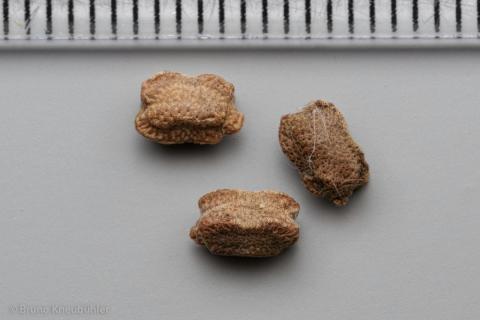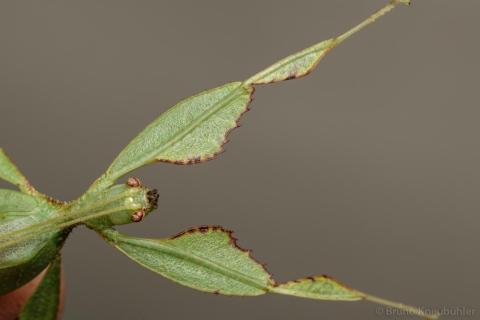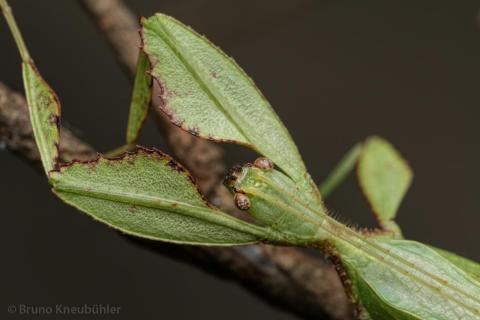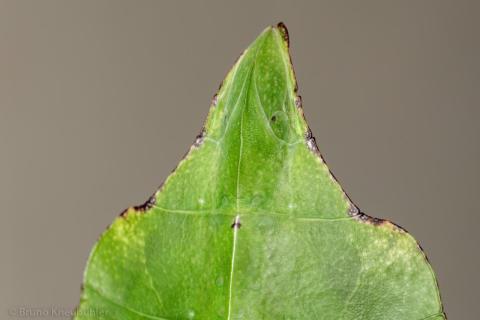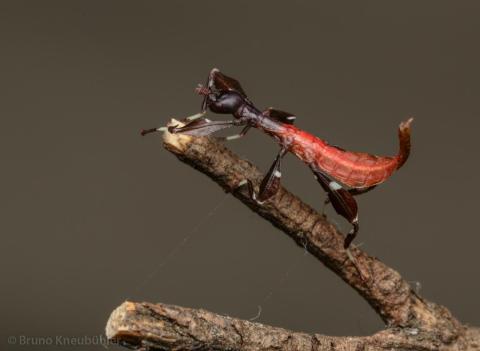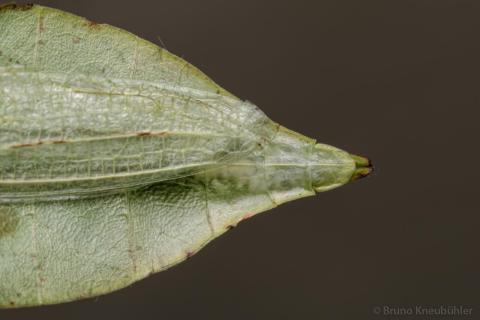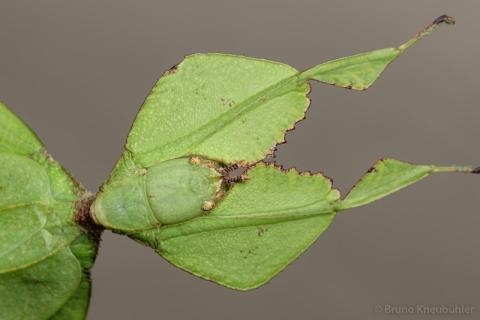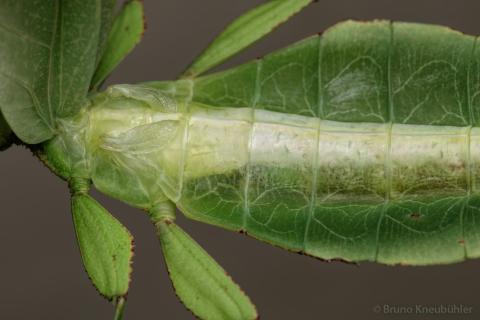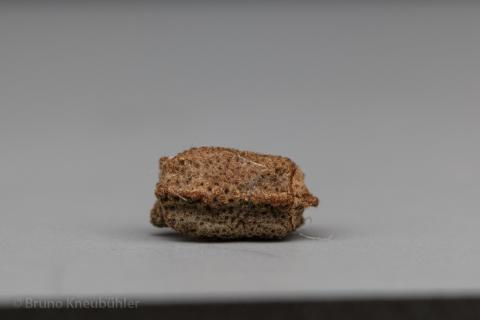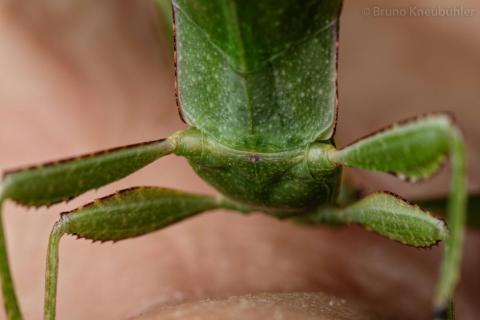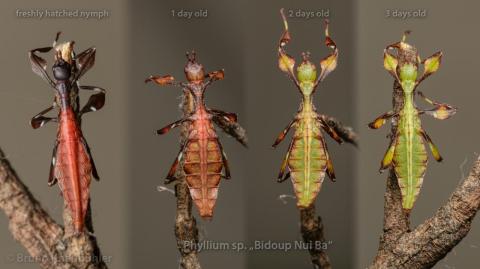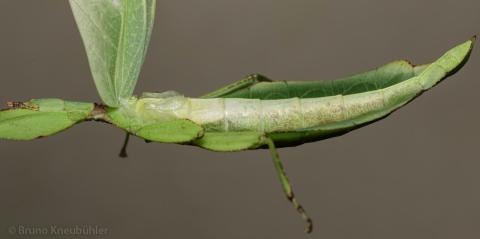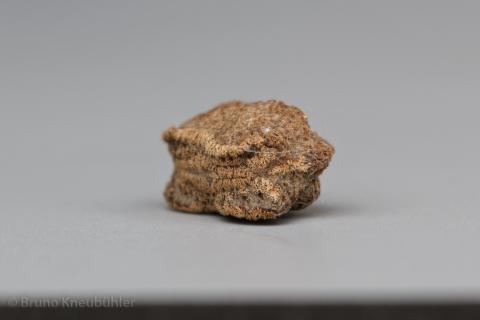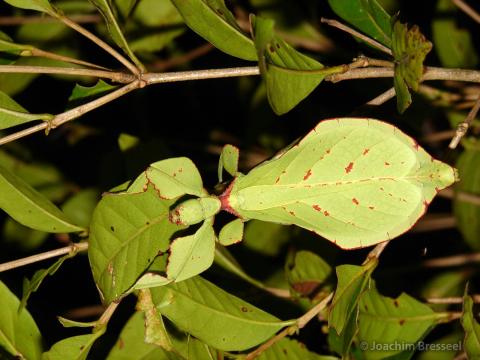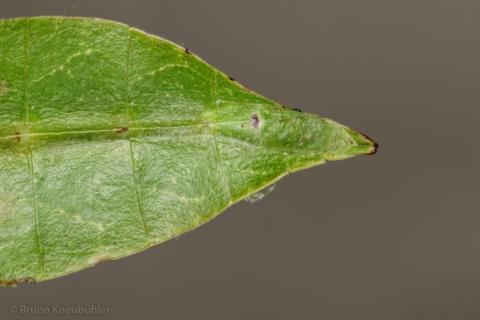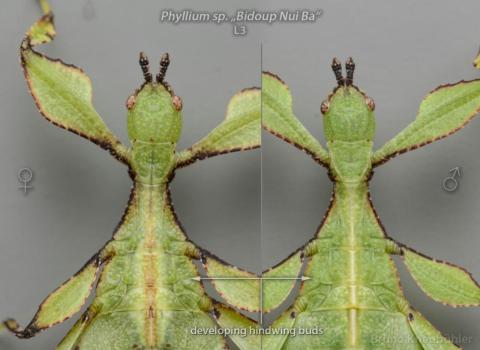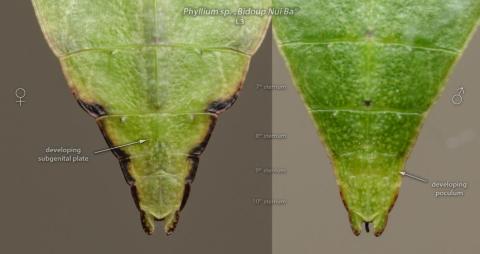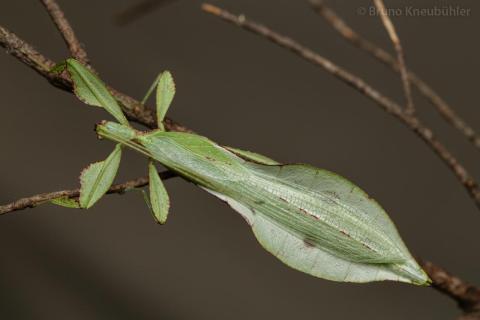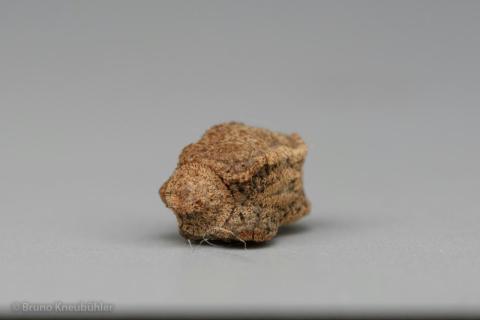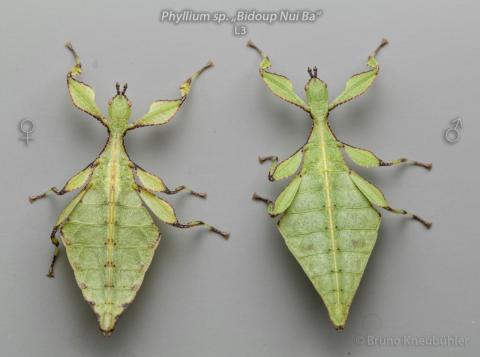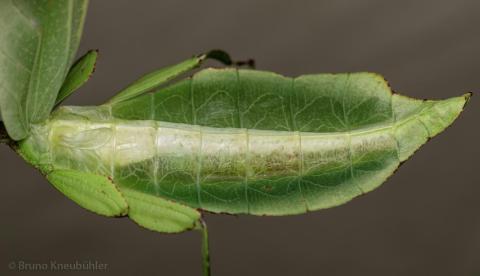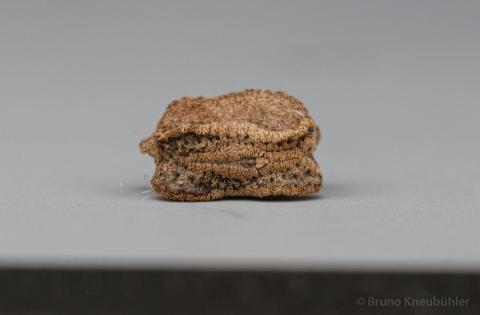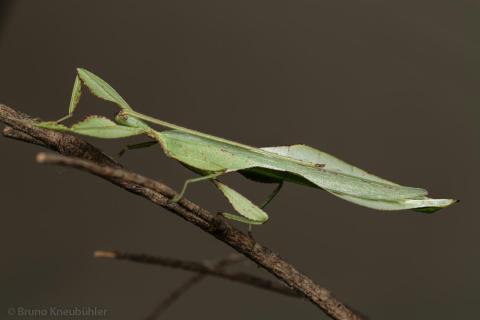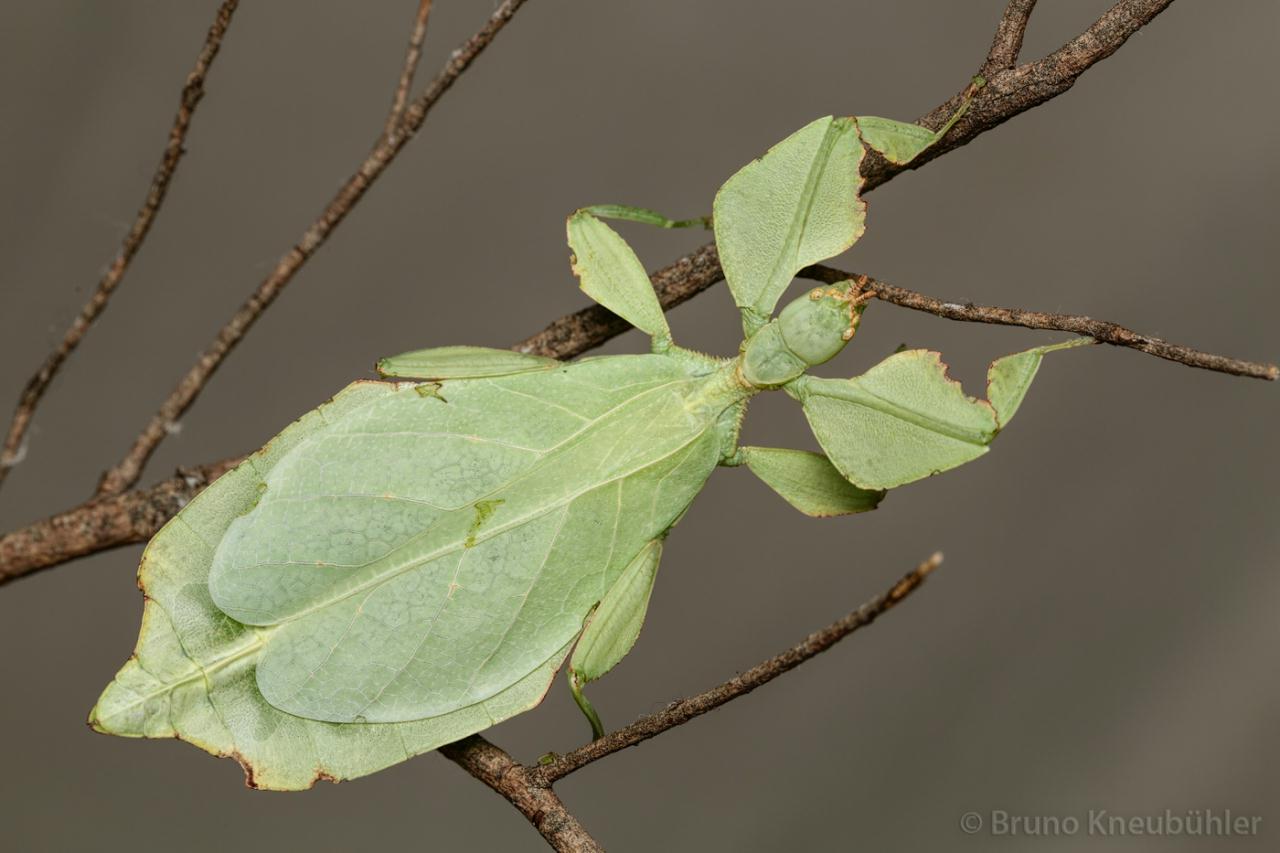
Genus
Species
Stock
CLP
724
Culture status
In culture
Foodplants
Bramble (Rubus spp.)
Breeding notes
(by Bruno Kneubuehler)
General Informations
- provenience: Bidoup Nui Ba NP (Vietnam)
- taxonomic evaluation by Joachim Bresseel (Belgium)
- F1 CB culture by Bruno Kneubuehler (2014 / 2015)
- further taxonomical informations ➤ phasmida.speciesfile.org
- this is a pure culture, and serious breeders will avoid mixing it with cultures of a different provenience
Females
- medium sized Phyllium species
- body length 8 - 8.5 cm
- green
- some females have reddish-brown patches and lines
Males
- body length 6 - 6.5 cm
- light green
Nymphs
- coloration of these nymphs are distinctively different from nymphs of other Phyllium species
- 16 mm
- freshly hatched nymphs are dark brown (legs, head, pro- and mesothorax) and red (metathorax, abdomen)
- on how to easily distinguish between male and female nymphs
Eggs
- 5 x 3 mm
- brown
- suface looks furry
Food Plants
- bramble (Rubus spp.)
well accepted by nymphs and adults
Breeding, Behaviour
- active mainly during the night
- they feign death when touched
- adult males drop to the ground quickly, when they feel threatened
- eggs just drop to the ground
- about 10 - 15 eggs per female and week
- incubation (HH-method on slightly damp sand) about 3.5 - 4.5 months at 20 - 23 °C
- eggs of this species are very prone to get mouldy (like eggs of many Phyllium species), and it is difficult to avoid this. Yet a thin mould layer does not affect the hatching ratio negatively
- nymphs hatch during the night
- a humidity of about 60 - 70 % seems to be good enough for this species
- the Free-Standing-Setup is very much recommened for small nymphs
- this Phyllium species should be kept in an airy cage (ventilator) too and get a lot of light
- one can spray them regularly with chlorine-free water, but the water should dry up again
- easy to breed in my experience
Basics of phasmids breeding
- keep only one species per cage, overpopulation is one of the main reasons for breeding failures
- keep nymphs seperate from the adults
- choose the cage big enough, and when in doubt it is (usually) better to choose a bigger cage than a too small one
- a ventilator often supports good breeding results
- provide enough light, but avoid direct sunlight (overheating)
- try to keep temperatures below 25°C
- a nocturnal fall of temperature is healty for the phasmids
- do not spray too much, phasmids are no fish ! The spray should dry up before you spray again
- minimize disturbances (loud music, commotions, light at or during the night, ect.) minimal
